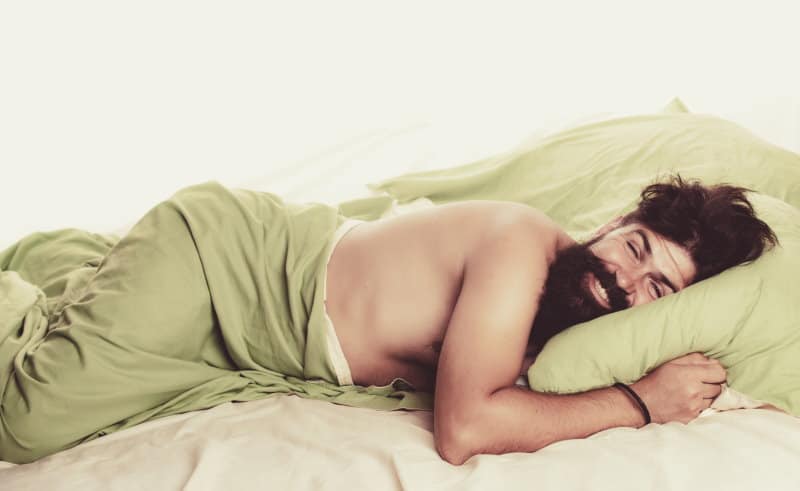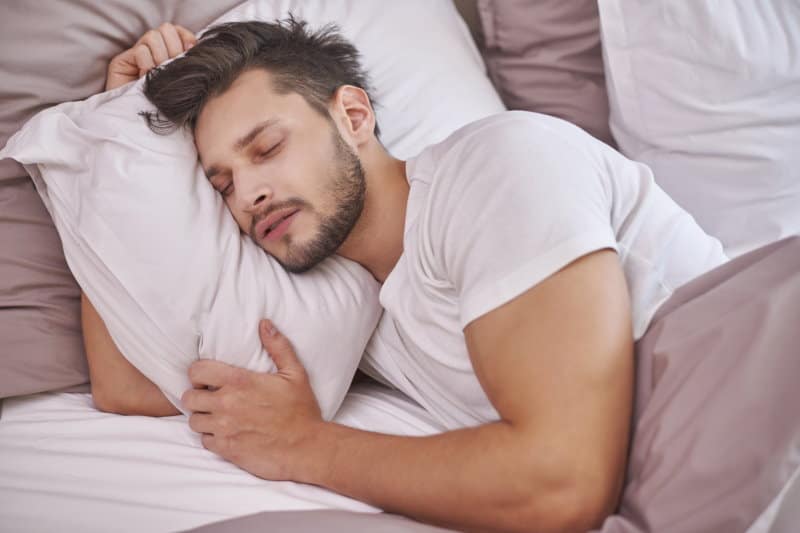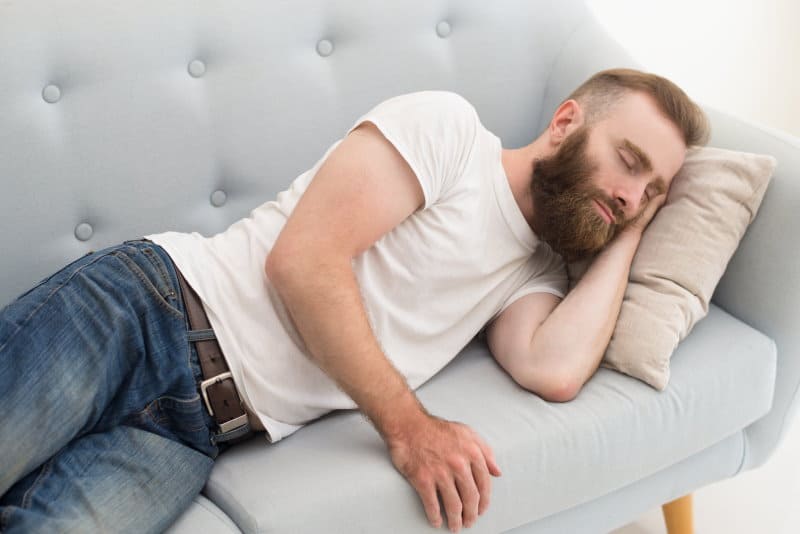Growing a beard isn’t just a habit. It’s a lifestyle. There’s a lot more going on in growing a full beard than people realize. The care for your beard goes even while you sleep.
If you’re here, then you’re mostly a man with a full beard that you want to take the maximum care of. You’ve probably asked yourself: does sleeping on one side affect beard growth?
Sleeping on one side can affect beard growth to some extent. Especially if you don’t change sides while you sleep.It’s not scientifically proven yet, but sleeping prolongedly on one side can tamper with beard growth. It can apply pressure, tear some hair, or wrinkle your skin.
If you’d like to know how this happens in detail, and also how to protect your beard as you sleep, read on.
How Does Sleeping On One Side Affect Beard Growth?

Science is yet to have evidence as no confirmed studies have been taken regarding this matter. However, the feedback and the observations of bearded men gave us the following conclusions:
1. Wrinkling of Skin
We don’t control how our bodies move as we sleep. When we place our faces against pillows, we could squeeze our faces inside the pillow without realizing it.
That squeezing isn’t necessarily harmful, but it forces our skin layers to fold against each other.
This could restrict the movement of some hair follicles and make them overlap each other, this could block skin growth as you sleep and may slow down beard growth as well.
However, it won’t come to the point where your beard is noticeably uneven.
A study in 2011 concluded that sleeping does indeed fold skin layers on each other. They designed a pillow that distributes the pressure evenly among the face.
2. Hair Tearing
As you sleep, you might accidentally tear some of your beard hairs. Especially if it’s long and thick.
If you move a lot while you sleep, you might trap some of your hair with your hands. Then as you move your head, some of those trapped hairs might be torn.
If you tend to sleep on one side more than the other, the beard tearing might be more noticeable on that side.
Additionally, even if you don’t tear your hair as you move your head, you could pull your beard hard. This pulling might not tear the hair follicle, but it will damage the skin layers around it.
The damaged skin may not be able to nourish the hair follicle, which eventually leads to permanent damage to the hair follicle.
3. Reduced Blood Flow
This one is highly debatable. If you apply pressure on any part of your body, you’ll cause some sort of reduced blood flow to that part.
This is a normal thing for the human body. We always reduce some blood flow as we sit down, lean against something, or do something simple like crossing our legs.
While we’re awake, our body can give us an alarm if a limb isn’t getting enough blood. This is called numbness. For example, when your leg feels numb, you immediately change your position to give it room to breathe.
However, numbness usually can’t wake us from our sleep. The constant reduced blood flow to some parts of your beard can slow down its growth over time.
Normally, you shouldn’t worry about reduced blood flow. But if you often wake up with numbness on parts of your face, that’s a different story.
It usually means that this numb part didn’t get enough blood flow for a long time. You may be sleeping too long in the same position.
How To Protect Your Beard While Sleeping
Here’s how you could maintain your beard’s health as you sleep.
1. Don’t Go to Bed with Wet Beard Hair
Whether it’s your beard hair or your head hair, it’s important not to go to sleep with wet hair.
Hair is stronger than you might expect. A single hair strand can carry up to 100 gm of water.
When you sleep, this water works its way down to the base of your hair. It goes through the epidermis and gets lodged in the keratin layer.
When you sleep on one side, the pressure accelerates this process even more.
This trapped water disturbs the nutrition that reaches your hair follicles which in turn, could slow down the growth.
Make sure that your beard is dry before you go to sleep. Towels alone aren’t enough, especially for larger beards. If your beard skin is unusually dry, you could use beard oil before going to bed.
Use dry air and work your fingers through your beard to make sure it’s dry enough. Don’t get the air drier too close to your skin or you might cause heat damage.
2. Sleep on Your Back

Train yourself to sleep on your back. This is the most comfortable position for your beard. It has the least possible amount of pressure on your beard skin.
Additionally, it also prevents your beard from getting trapped and torn under your hands.
It’s hard to control how you move as you sleep. So, the easiest way to train your body to sleep on your back is by using pillows.
Place two hard pillows next to your shoulders when you sleep to prevent your body from rolling over. It could take some time, and may make your sleep uncomfortable for a few weeks.
But in the end, it will be worth it.
Another way that can help you is by using a head pillow that has elevated edges at the sides. Such a pillow will prevent your neck from rolling over and trapping your beard.
3. Soft Pillow Cases

Not everyone can switch their sleeping position. If that’s the case for you, then using soft pillowcases is your next best thing. A silk pillowcase is a good example.
Silk pillowcases minimize the friction between your beard and the pillow. This helps in reducing the pressure and the amount of torn hair.
Additionally, soft pillowcases don’t rub off the oil and natural moisturizers off your beard like normal pillowcases.
4. Beard Wraps and Ties
For those of you fine gentlemen who have exceptionally long beards; you’ll need more protection than just soft pillowcases.
Beard wraps offer maximum protection to your beard as you sleep. It prevents tearing, pressure, and friction against your beard skin.
If you can’t tolerate the bulkiness of a beard wrap, then a beard tie is a good alternative. Beard ties offer more freedom for your beard to move; all while keeping the hair strands together.
Additionally, if you prefer to sleep on one side, you can tie your beard so it would face the other side to prevent harming it.
Final Thoughts
So, does sleeping on one side affect beard growth? Well, science doesn’t say it, but it might have some effects on your beard.
However, these effects won’t be so prominent unless you hardly move when you sleep.
Your red flag is the numbness or the tingling. If your face feels numb after you wake up, then you mostly apply too much pressure on that side as you sleep.
You could train yourself to sleep in different positions or use beard wraps and ties to protect your beard as you sleep.
If you’d like to know more about beard growth rates, check out this article.

